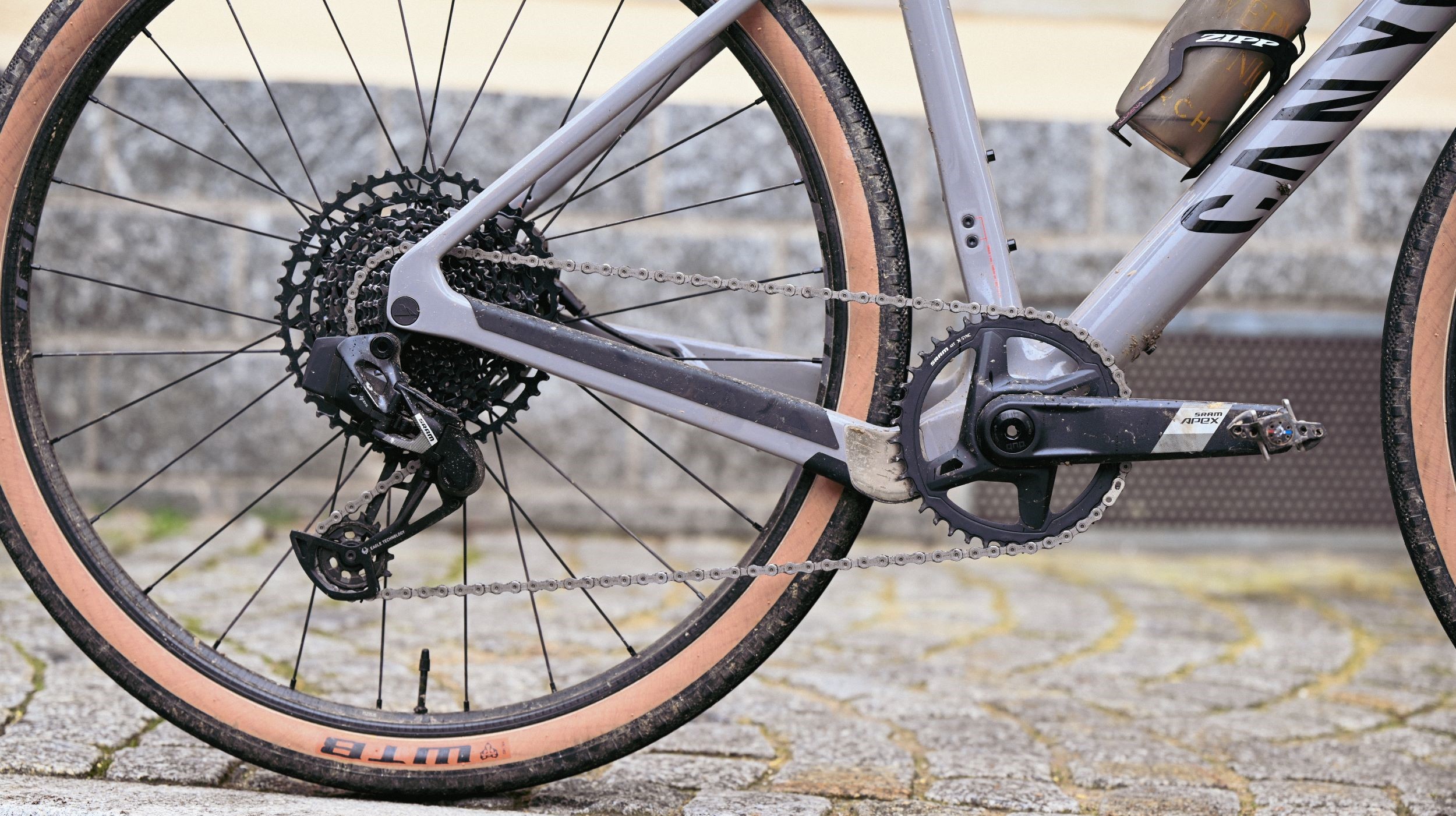
Not content with three 12-speed electronic drivetrain options, SRAM has launched Apex AXS, sitting below its Red AXS, Force AXS and Rival AXS groupsets.
It’s one-by only (1x) and available in XPLR wide-range configuration with 10-36t, 10-44t and 11-44t cassettes. While the cassettes starting at 10 teeth require an XDR freehub, the 11-44t cassette fits on a standard 11-speed freehub, adding extra wheel compatibility.
There’s also a new Apex Eagle AXS option which uses a 10-50t, 11-50t or 10-52t cassette for a really wide gear range.
Alongside the electronic drivetrains, there are matching 12-speed mechanical Apex XPLR and Apex Eagle groupsets launched, which use SRAM’s usual Doubletap shift logic.
Apex XPLR AXS electronic groupset
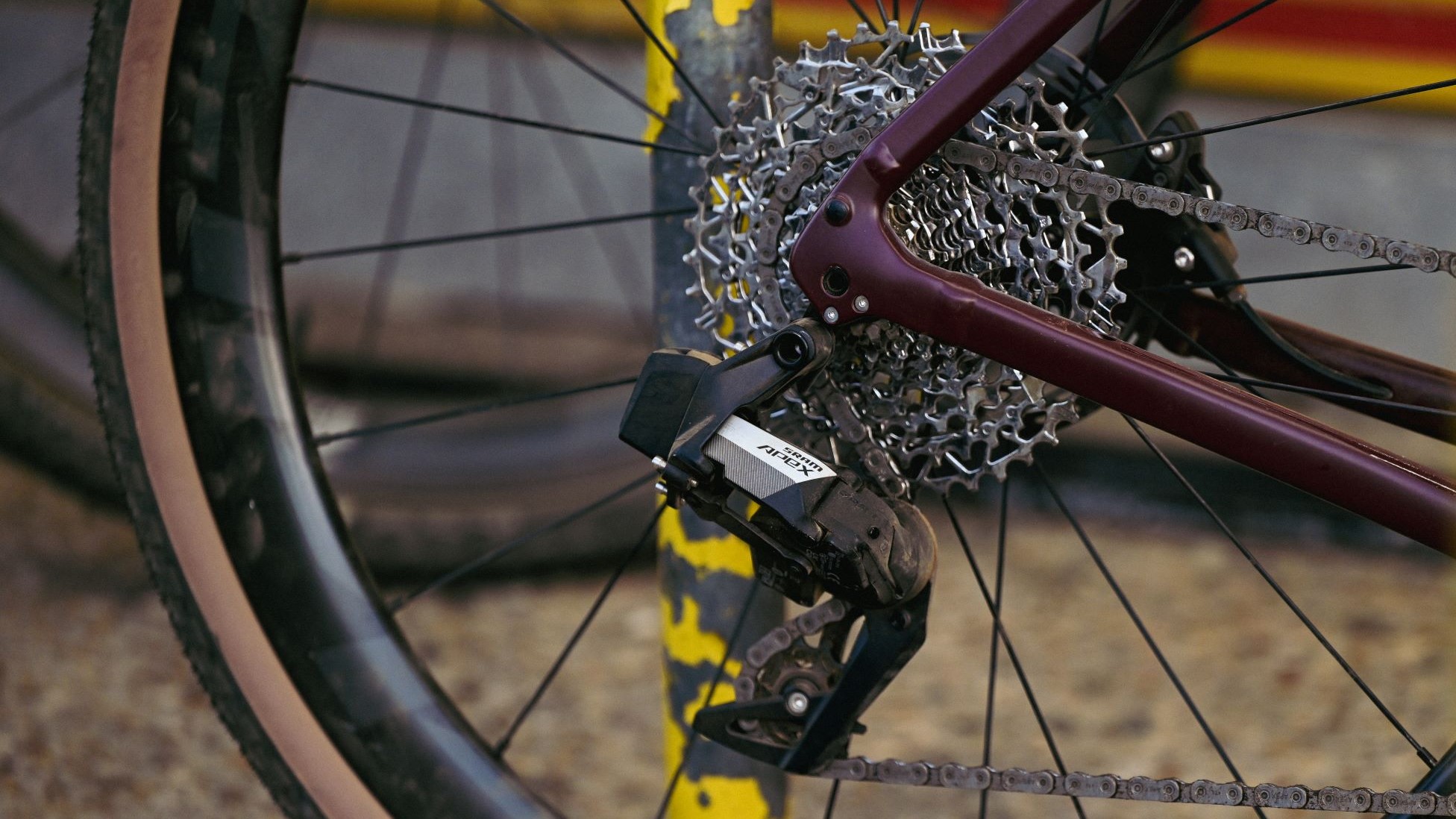
Apex XPLR AXS mirrors much of the tech in the Rival 1 AXS single ring groupset, but at a lower price point.
The Apex XPLR AXS groupset uses the same derailleur-mounted, removable battery as SRAM’s other electronic groupsets and can be reconfigured using the AXS phone app. As with the Rival AXS groupset, the rear derailleur uses a sprung clutch to help keep the chain in order.
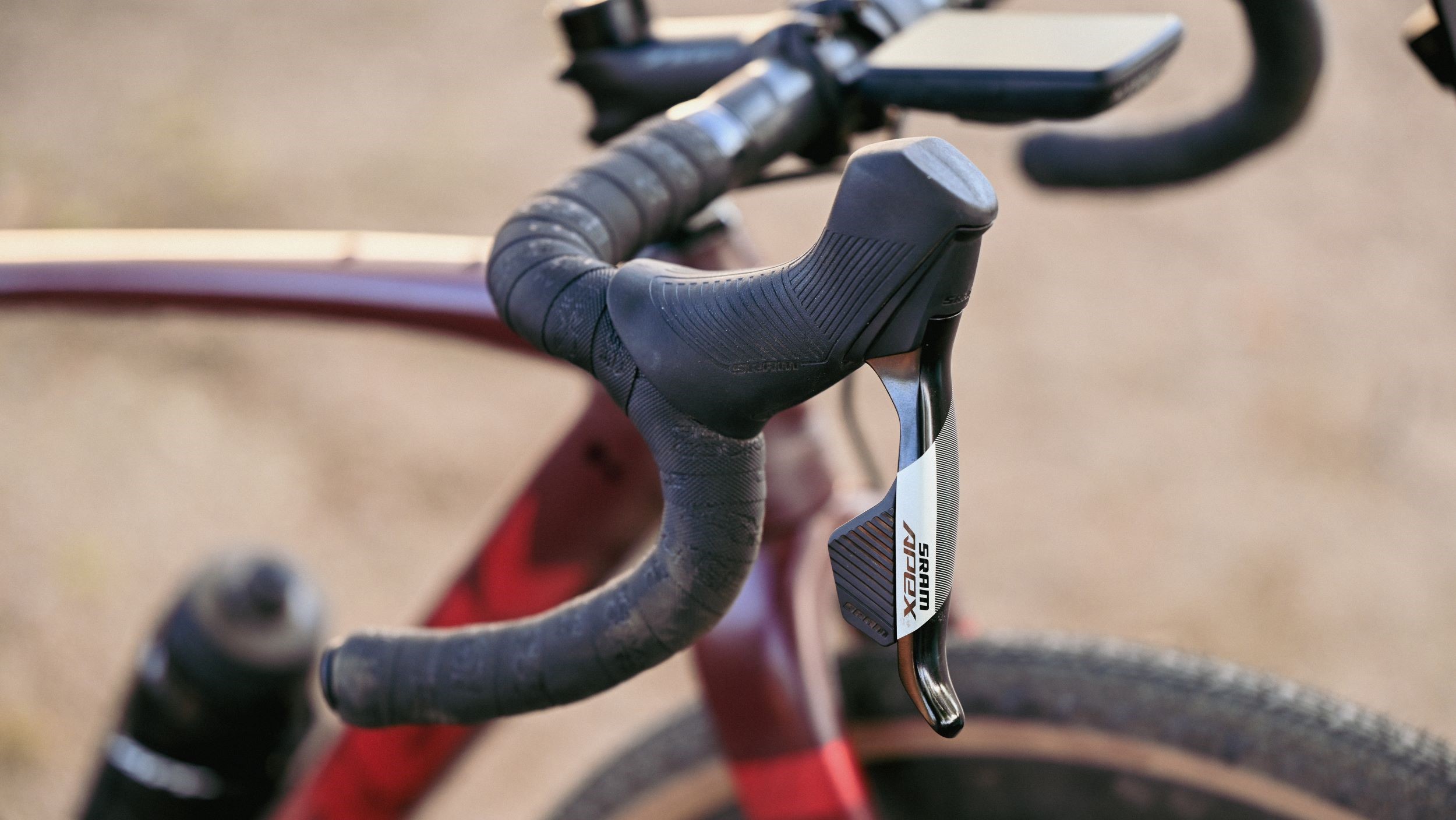
The Apex AXS levers feature a similar ribbed design to the hoods and levers as Rival AXS and the latest second-generation Force AXS and include reach adjust. As you’d expect, the APEX XPLR AXS groupset is available with hydraulic disc brakes only. As you may expect there is also a new Apex-spec Flattop chain.
SRAM lets you pair the Apex AXS levers with up to three sets of wireless Blips satellite shifters, offering additional shift locations, such as in the drops or on the tops of the handlebars.
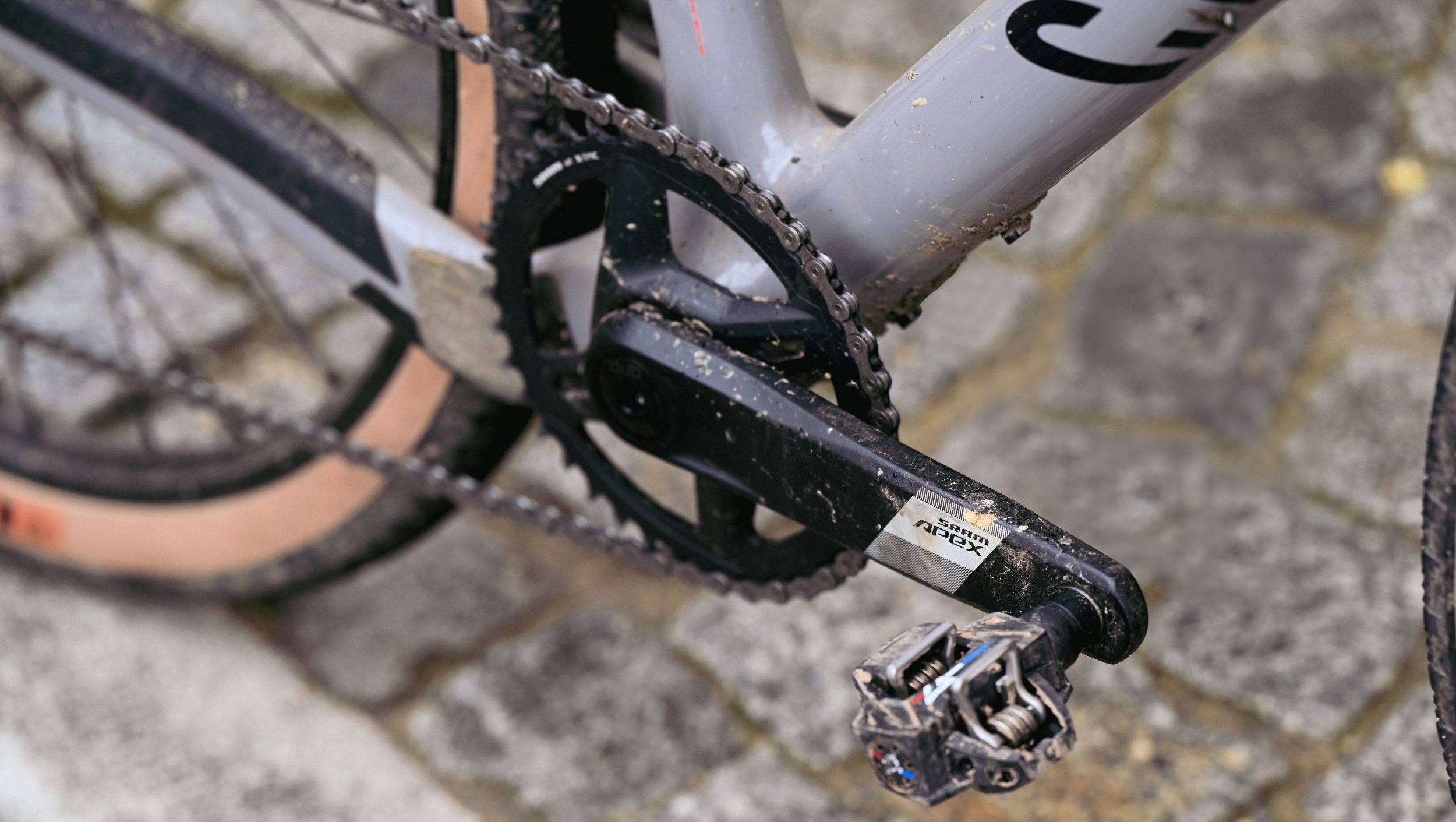
All configurations of 12-speed Apex use a 1x direct mount single chainring crankset that's available with 38, 40, 42, 44 or 46 teeth. Crank length options are 165mm 170mm, 172.5mm and 175mm.
The crankset uses Wide spacing, which shifts the chain line 2.5mm outboard relative to a standard road bike chainset. This allows its use with wider gravel bike tyres and with Boost rear axle spacing as well as the more usual 142mm and 135mm road/gravel axles. The spindle is also longer so the Apex crankset is also compatible with MTB-width bottom bracket shells.
There’s even a single-sided left crank-based power meter option, again mirroring the Rival-level offering. This runs off a single AAA battery and SRAM says that it adds just 40g to the weight of the standard crank arm.
Apex mechanical groupset
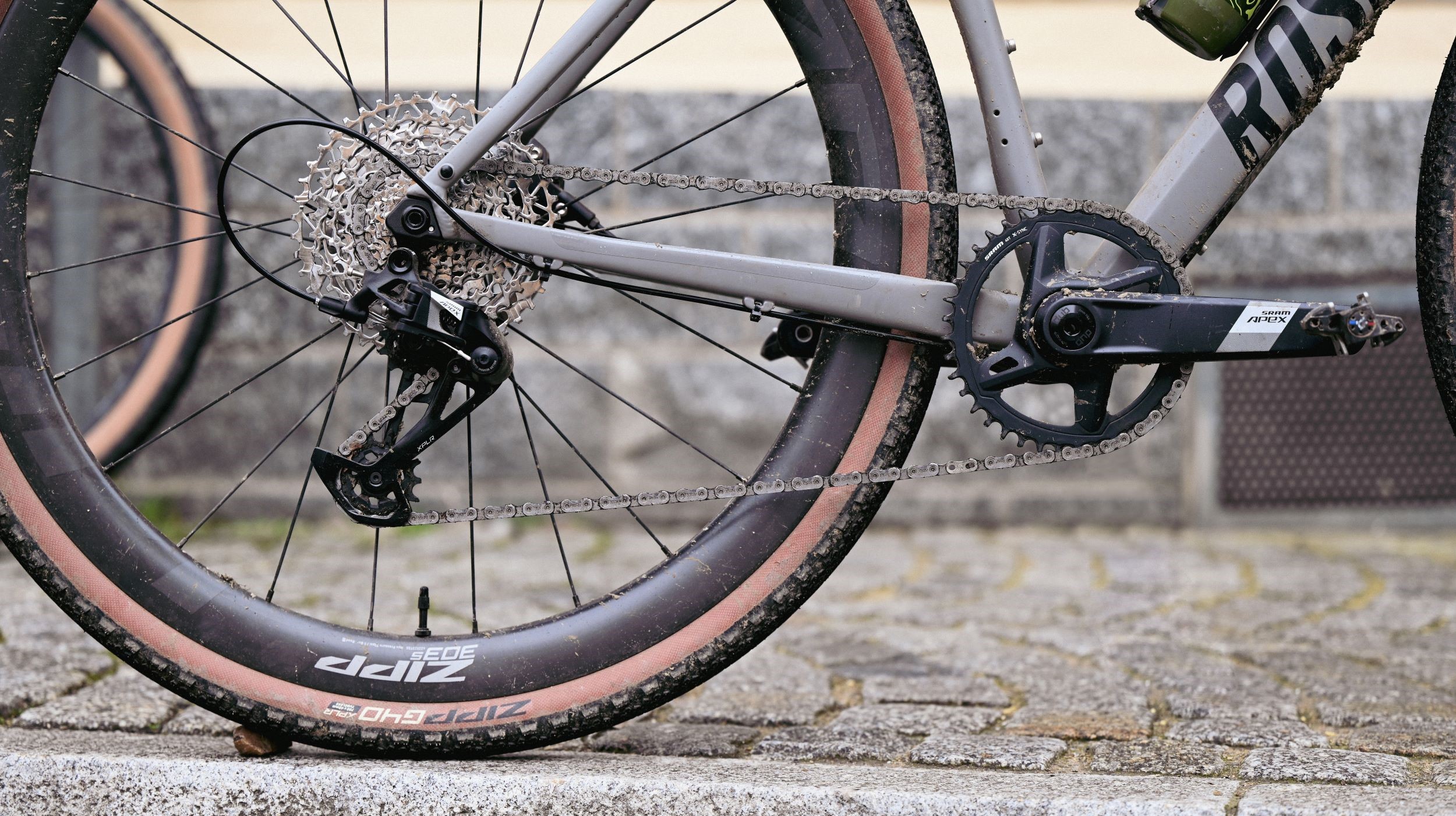
At the same time, SRAM has introduced a 12-speed mechanical option for Apex, its first 12-speed mechanical shifting groupset for road bikes.
It is compatible with 10-44t and 11-44t cassettes and incorporates SRAM’s DoubleTap shifting in the right lever. Like the electronic option, it includes reach adjust and hydraulic disc brakes and uses the same Apex Flattop chain as well as a mechanical clutch.
Wide range Apex Eagle options
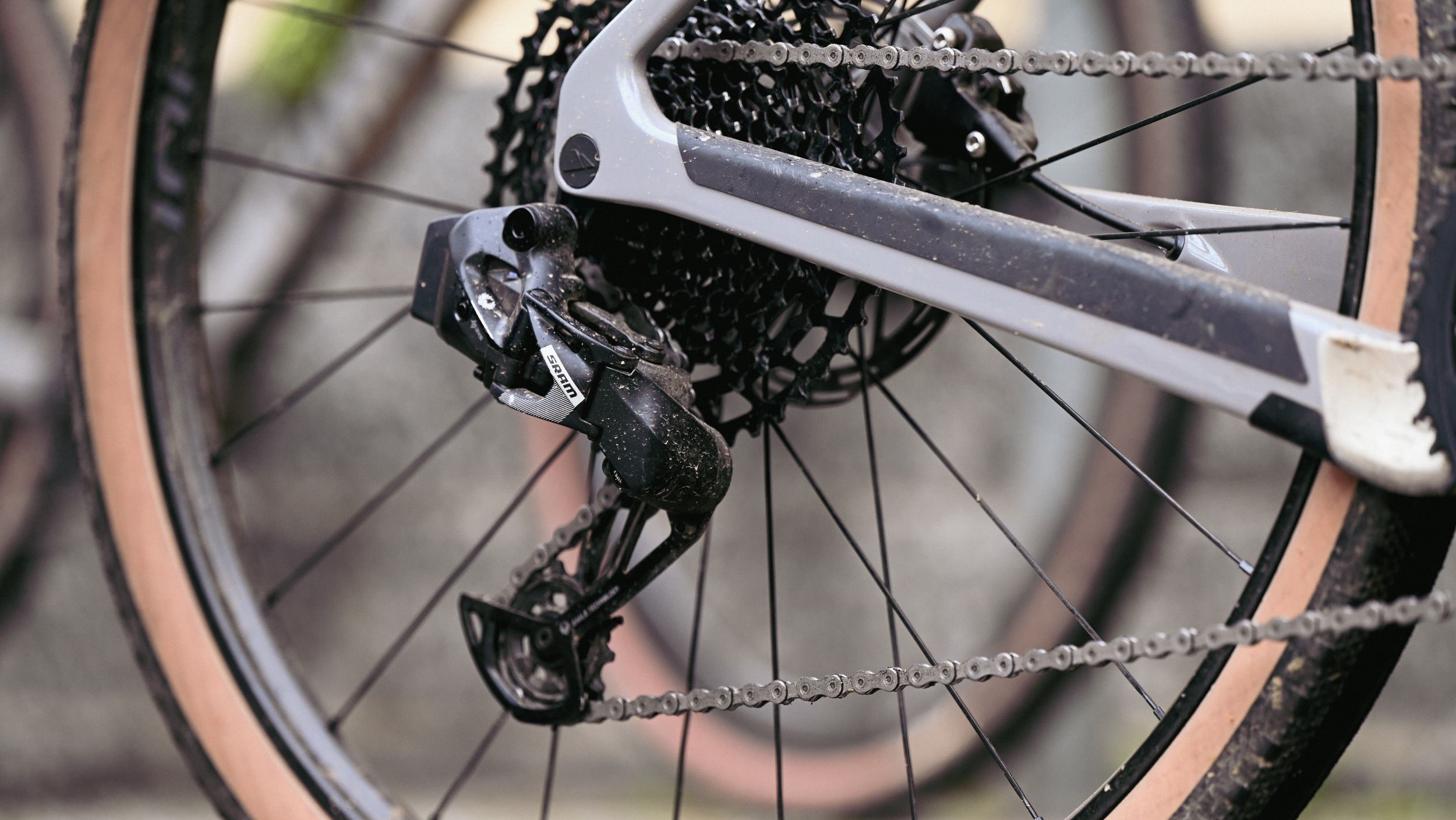
Eagle is the name that SRAM has applied to its 12-speed mountain bike groupsets, which use a 10-50t, 11-50t or 10-52t cassette for a wider gear range. Since its launch, it has promoted its Red, Force and Rival AXS groupsets in a mullet build with an MTB Eagle derailleur and cassette as an extra-wide range option for gravel bikes.
Now SRAM has ported Eagle tech over to the road side of things, with the launch of Apex Eagle AXS electronic and Apex Eagle mechanical groupset options.
As with the MTB Eagle groupsets, Apex Eagle AXS and Apex Eagle mechanical are compatible with a 50t or 52t largest sprocket cassette.
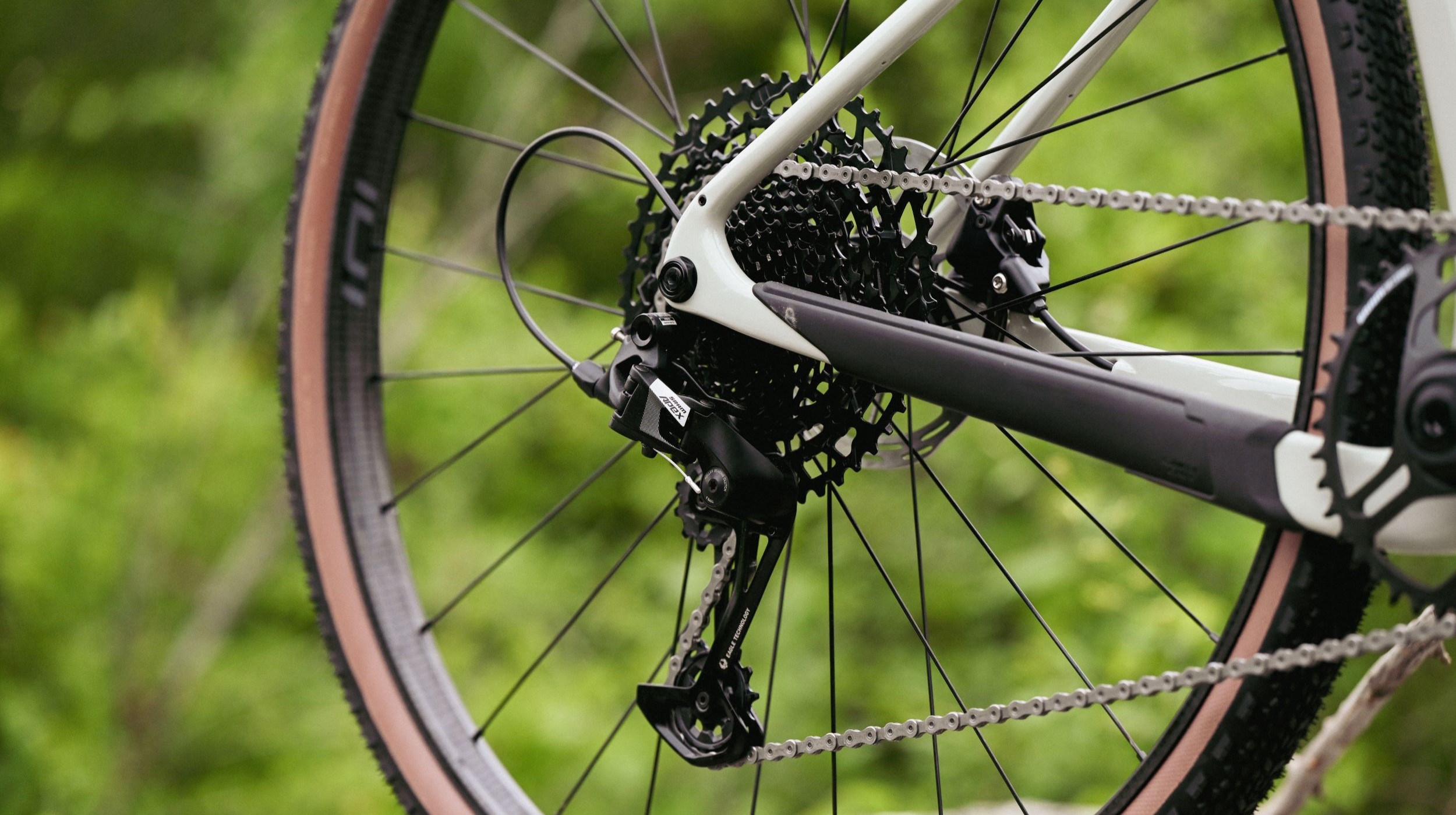
Somewhat awkwardly, the cassettes need the same Eagle 12-speed chain as SRAM’s MTB Eagle groupsets, rather than the slightly-wider Flattop 12-speed road chain. The cassettes also have the same MTB-like spacing, which is narrower than a road cassette, so they’ll need a 1.85mm spacer behind the cassette to fit on an XDR freehub.
The electronic Eagle rear derailleur is a cross-over product designed to work either with MTB AXS shifters or Apex AXS road bike shifters. It’s named X1 Eagle AXS and is compatible with gravel and mountain bike drivetrains. There’s an overload clutch included, which is designed to protect it from impacts.
The Apex Eagle mechanical rear derailleur and the X1 Eagle AXS electronic derailleur have the same roller clutch as in the Apex XPLR rear mech to manage chain tension. Both also include a cage lock to help make removing a rear wheel a little easier.
Plus flat-bar options
SRAM hasn’t limited the new Apex tech to drop bar bikes either, with a flat bar hydraulic brake lever also launched. Shifting can use either an AXS flat bar shifter or, for mechanical groupsets, a 12-speed flat bar or gripshift shifter.
What does it all mean?
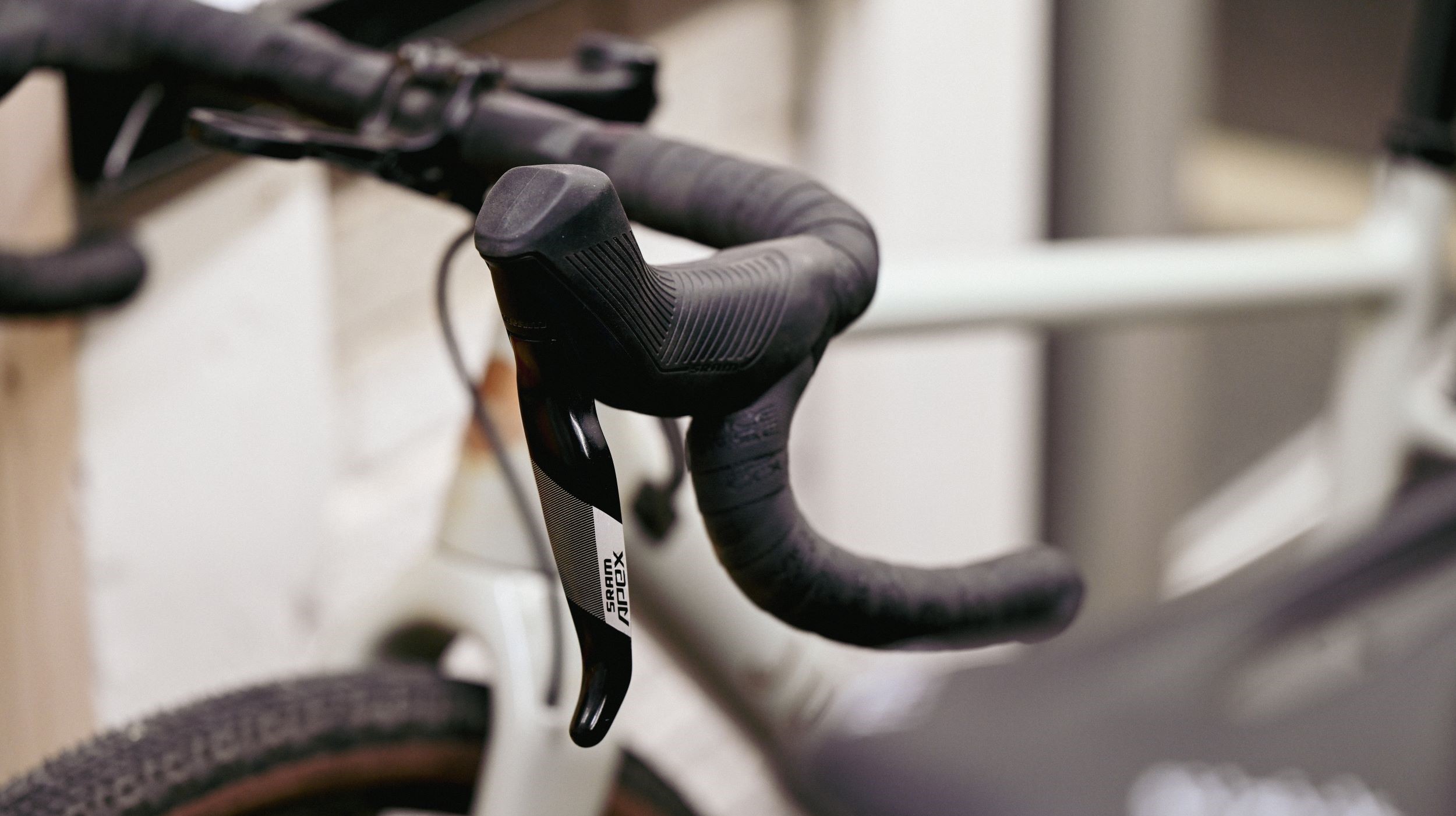
For users, the availability of a fourth tier to SRAM’s electronic groupset hierarchy means there’s an even wider choice of options and that electronic and 12-speed shifting is available to a wider audience. Now that SRAM has increased Apex’s cross-compatibility with its MTB groupsets it offers even more choices if you want a really wide range for road or gravel use.
SRAM has always majored in single-ring solutions for mountain bikes and gravel bikes and the new groupset is heavily geared towards the latter. It’s borrowed from this technology with the new Apex, with features like standard 11-speed freehub compatibility and flat bar levers broadening the appeal for road users.
The mechanical options also show that SRAM hasn’t abandoned cable-operated shifting for drop bar bikes, with 12-speed offering a wider range with closer ratios.
The price gap to electronic shifting isn’t that great though, so 12-speed Apex mechanical isn’t going to appear on any budget bikes any time soon. The small price differential is also likely to convince more riders that electronic shifting is the way to go, even if mechanical options are slightly lighter.







